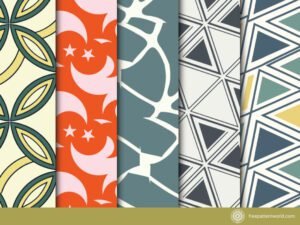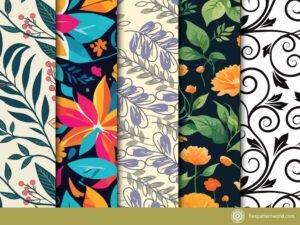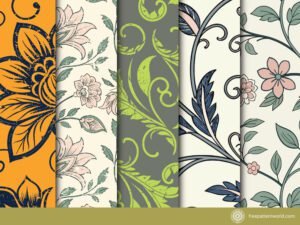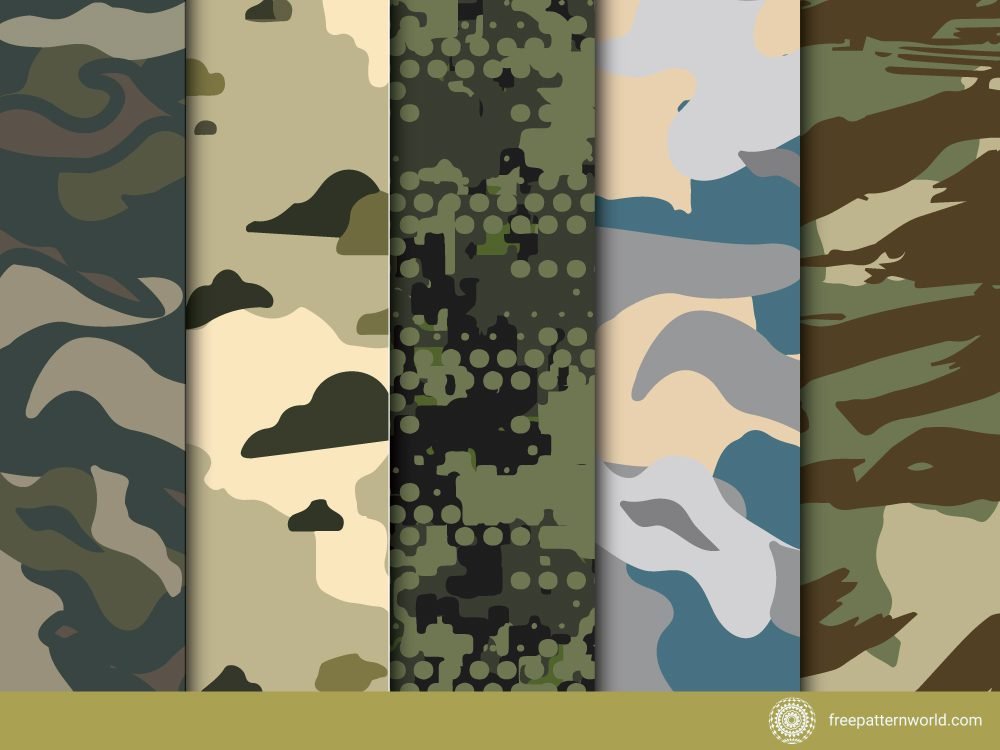
Table of Contents
Military patterns have evolved over the years, combining functionality with style and becoming iconic symbols in fashion and design. Originally created for camouflage and tactical advantage, these patterns have found their way into various applications beyond the military. Here, we explore the top five military pattern designs that have stood the test of time and continue to inspire designers and enthusiasts alike.
Woodland Camouflage Pattern
Woodland camouflage, introduced in the early 1980s, was developed for the U.S. military. Its design consists of high-contrast patches of green, brown, tan, and black, intended to blend seamlessly into forested environments. The irregular pattern mimics the natural textures and shadows found in wooded areas, making it highly effective for concealment.
Applications:
- Outdoor apparel
- Tactical gear
- Urban fashion
Woodland camouflage’s timeless appeal and versatility have made it a popular choice in both military and civilian clothing, as well as outdoor equipment.
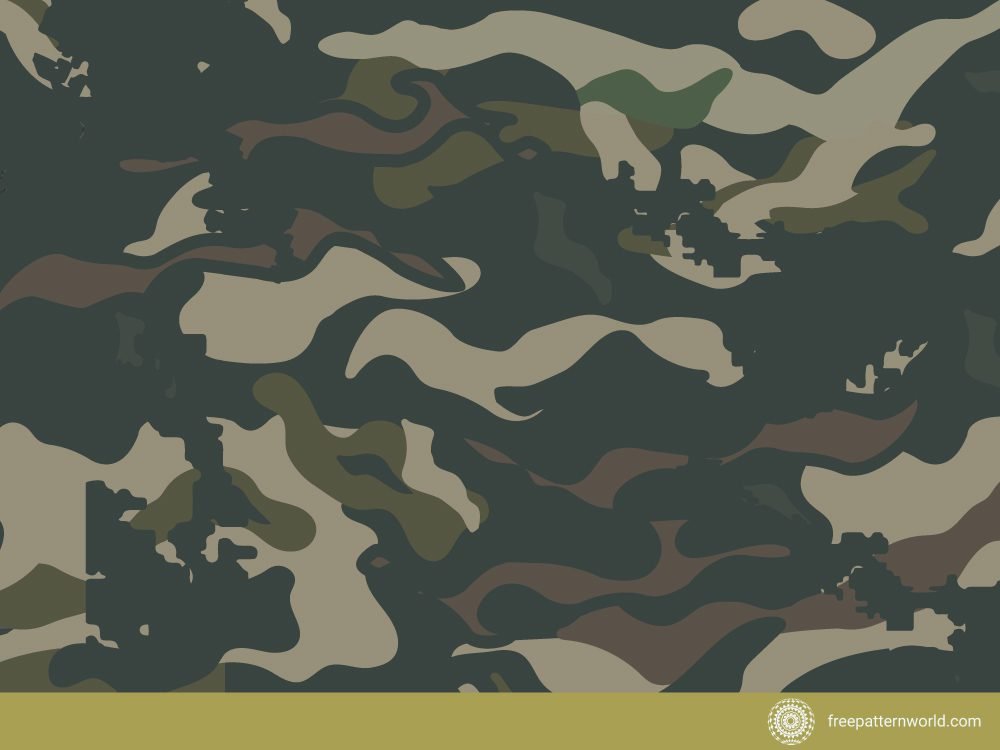
Desert Camouflage Pattern
Desert military pattern camouflage, also known as the desert battle dress uniform (DBDU), was created to provide concealment in arid, sandy environments. This pattern features shades of tan, brown, and beige, replicating the colors of desert landscapes. It gained prominence during the Gulf War and has since been used in various desert operations.
Applications:
- Military uniforms for desert operations
- Streetwear
- Outdoor gear
The neutral tones of desert camouflage have made it a fashionable choice in urban settings, adding a rugged, utilitarian edge to clothing and accessories.
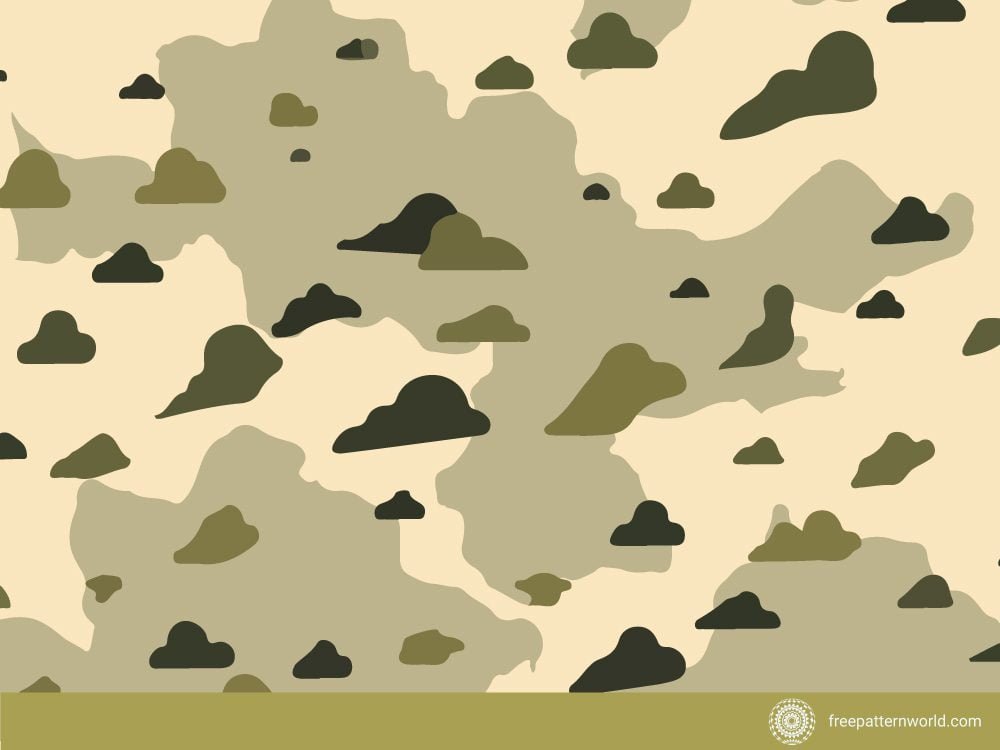
Digital Camouflage
Digital military pattern camouflage, or digi-cam, was a significant innovation in military pattern design. Introduced in the early 2000s, this pattern uses small, pixel-like squares to create a disruptive design. The pixelation helps to break up the wearer’s outline more effectively than traditional patterns, providing superior concealment across various environments.
Applications:
- Modern military uniforms
- Tech accessories
- Fashion items
Digital camouflage’s modern aesthetic has made it popular not only in the military but also in technology and contemporary fashion, symbolizing cutting-edge innovation.
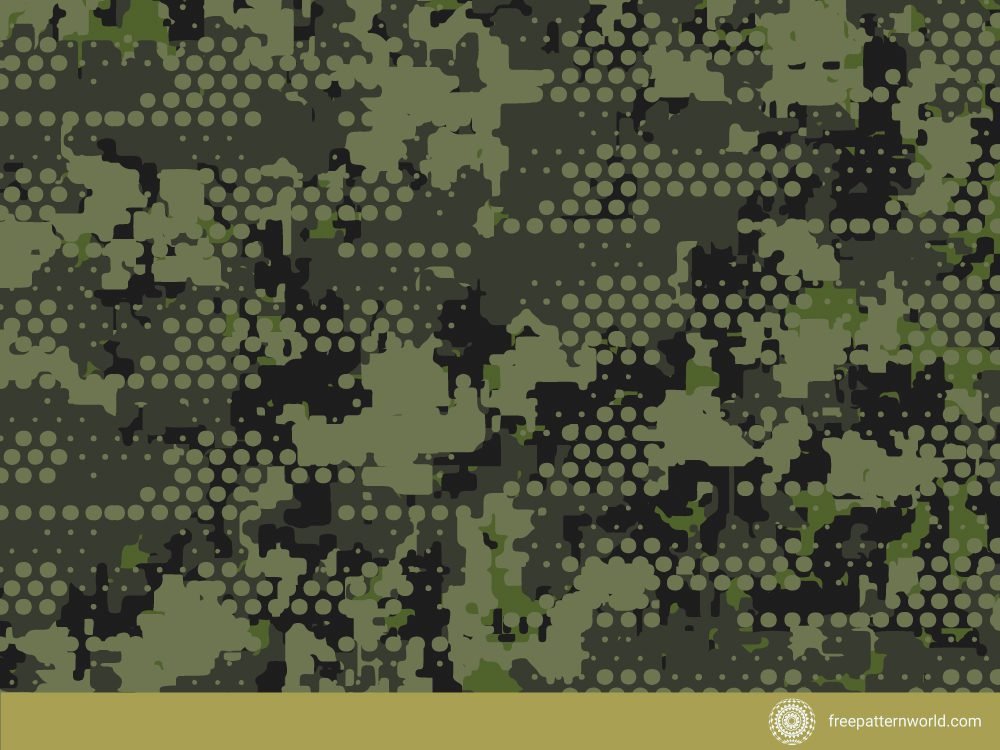
Multicam
Multicam is a highly adaptive camouflage pattern developed by Crye Precision. Designed to work across multiple environments, it uses a gradient blend of greens, browns, and beiges. This versatility makes it effective in a variety of settings, from arid deserts to lush forests.
Applications:
- Versatile military uniforms
- Outdoor adventure gear
- Hunting apparel
Multicam’s adaptability has made it a favorite among military forces worldwide, as well as outdoor enthusiasts who require reliable camouflage in diverse terrains.
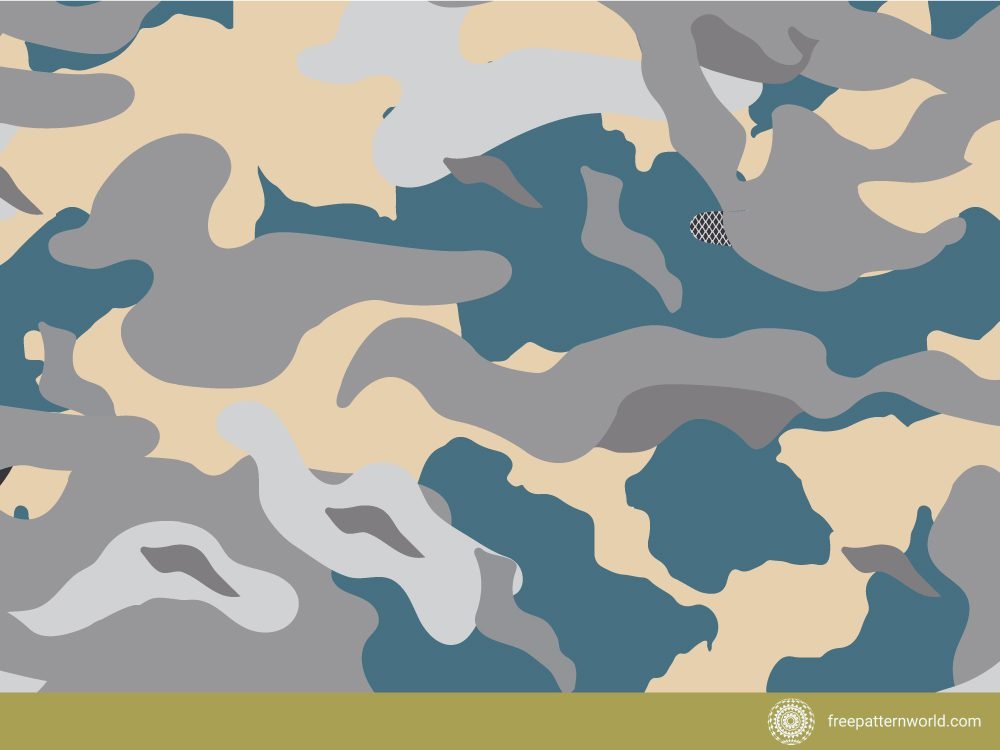
Tiger Stripe Camouflage
Tiger stripe camouflage, originally developed during the Vietnam War, features bold, irregular horizontal stripes resembling a tiger’s fur. This pattern was designed for jungle warfare, providing excellent concealment in dense, leafy environments.
Applications:
- Jungle warfare uniforms
- Fashion statement pieces
- Artistic designs
The striking design of tiger stripe camouflage has transcended its military origins, becoming a popular motif in fashion, art, and interior design. Its bold, distinctive look makes it a favorite for those looking to make a statement.
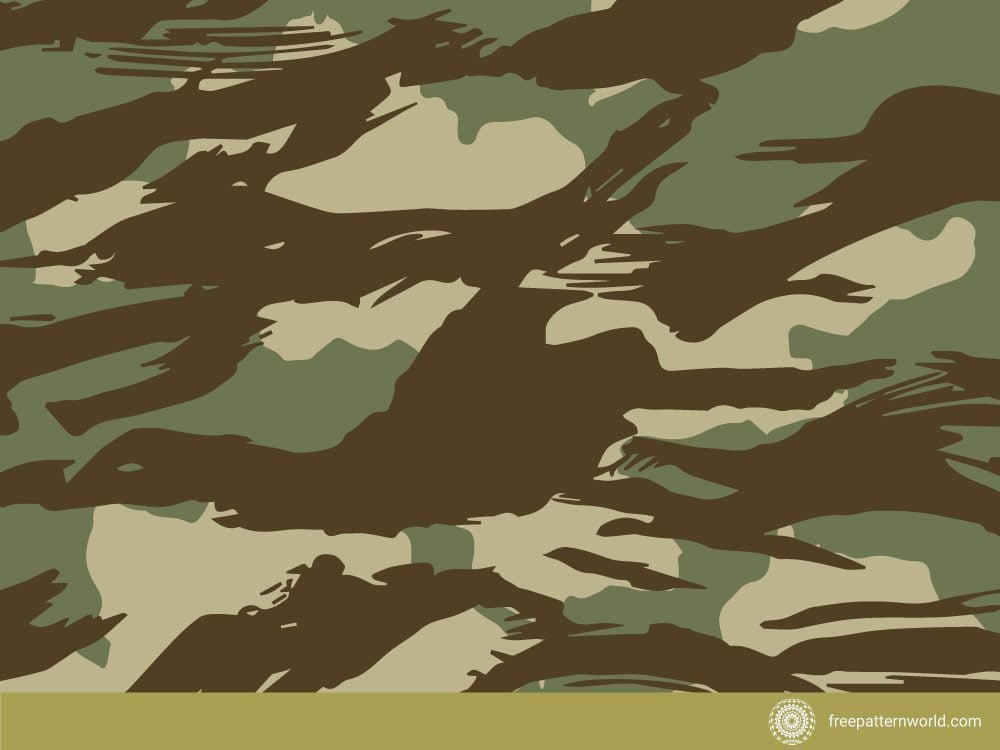
Military patterns are not just about concealment and tactical advantage; they are cultural symbols that have found their place in fashion, design, and everyday life. From the dense forests symbolized by woodland camo to the adaptable versatility of Multicam, each pattern has a story of innovation and aesthetic appeal. Whether you’re designing outdoor gear, fashion items, or home décor, these top five military pattern designs offer a rich source of inspiration, blending functionality with timeless style.
To download more Click here.
Download more free designs from freepatternword and freepik.
Top Graphic design service provider – Click here.
Support Us with Crypto!
If you enjoy our content and want to help keep this site running, you can support us with crypto. Your support is appreciated!
USDT(TRC20): TSW1iyNhUHiGvc2VdQvZqkqgCTGvdrnsY7
Bitcoin: 38ZHQNkrbZKYJhbLeFZiCrQdR3C2ddtAzV
ERC-20: 0xe1BD9D788256905c6efFd38333A3fF1b6DE3ce67
What are the top military pattern designs?
Woodland Camouflage: Introduced in the 1980s, featuring green, brown, tan, and black.
Desert Camouflage: Known for its tan, brown, and beige tones, used in arid environments.
Digital Camouflage: Utilizes pixel-like squares for superior concealment.
Multicam: Adaptable pattern using a blend of greens, browns, and beiges.
Tiger Stripe Camouflage: Features bold, irregular horizontal stripes for jungle warfare.
Why is Woodland Camouflage popular?
Woodland camouflage is popular for its effectiveness in forested environments and its versatile appeal in outdoor and urban fashion.
How does Digital Camouflage differ from traditional patterns?
Digital camouflage uses pixelation to break up the wearer’s outline more effectively across various environments, providing superior concealment.
What makes Multicam versatile?
Multicam’s gradient blend of colors allows it to adapt to multiple environments, from deserts to forests, making it a favorite among military forces and outdoor enthusiasts.
Where did Tiger Stripe Camouflage originate?
Tiger stripe camouflage originated during the Vietnam War, designed for jungle warfare with bold, irregular horizontal stripes resembling a tiger’s fur.
What are some modern uses of these patterns?
These patterns are used in:
Military uniforms
Outdoor adventure gear
Fashion items
Hunting apparel
Artistic designs
Are these patterns used outside of the military?
Yes, these patterns have transcended their military origins and are widely used in fashion, art, and interior design, offering a blend of functionality and style.

